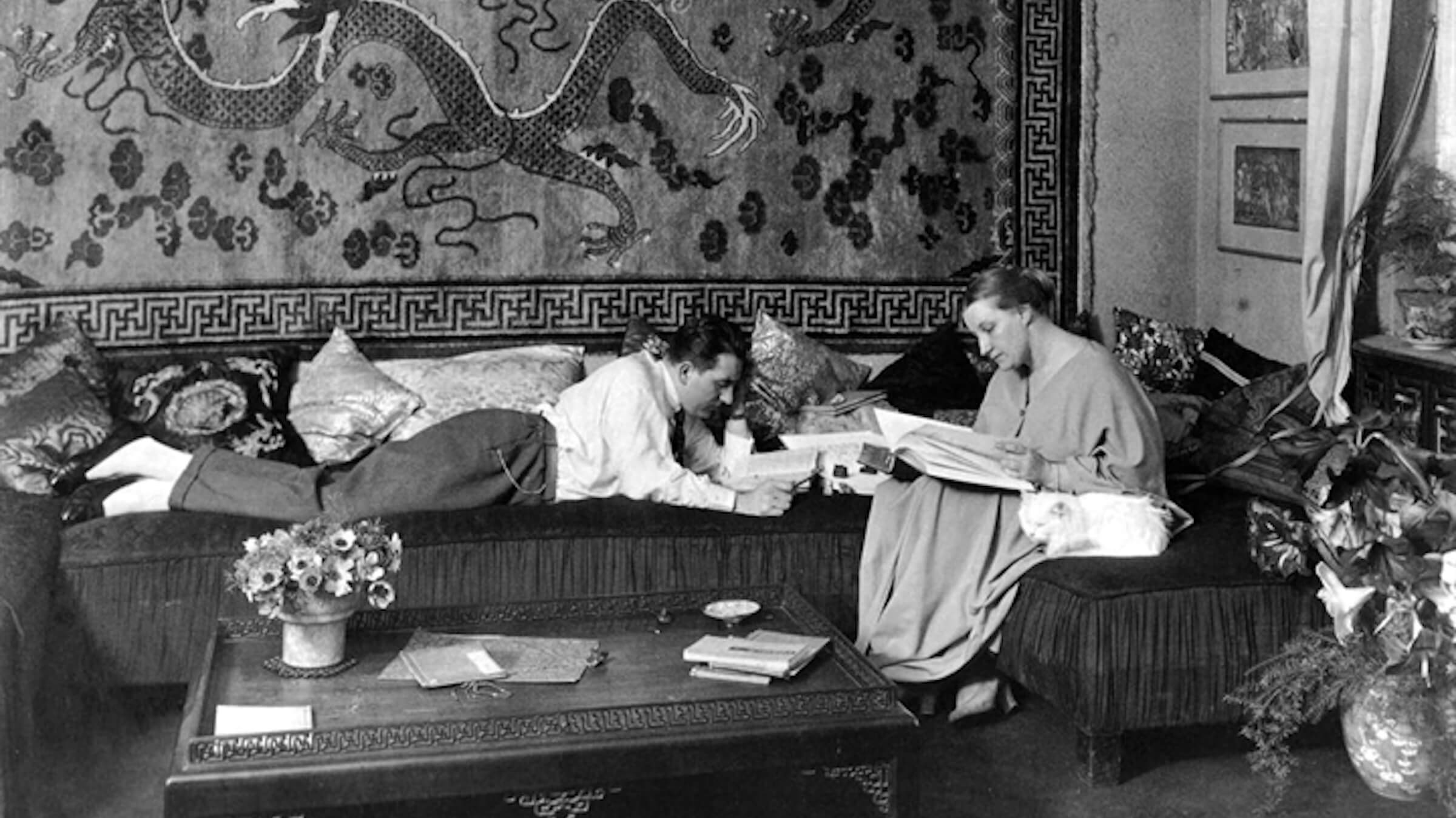This feature was published in conjunction with the screening of Destiny at SFSFF 2016
Thea von Harbou Writes Fritz Lang
1920 Das wandernde Bild (The Wandering Shadow)
1921 Vier um die Frau (Four Around the Woman), a.k.a. Kämpfende Herzen
1921 Der müde Tod (Destiny)
1922 Dr. Mabuse, der Spieler (Dr. Mabuse, the Gambler)
1924 Die Nibelungen: Siegfried
1924 Die Nibelungen: Kriemhild’s Rache (Die Nibelungen: Kriemhild’s Revenge)
1927 Metropolis
1928 Spione (Spies)
1929 Frau im Mond (Woman in the Moon)
1931 M
1933 Das Testament des Dr. Mabuse (The Testament of Dr. Mabuse)
Thea von Harbou and her husband Fritz Lang were one of the most successful director-screenwriter teams of Germany’s Weimar-era cinema, until the political and personal conspired to end their partnership of more than a decade. Born in 1888 to an aristocratic family of dwindling fortunes, the precocious von Harbou published a book of poems at thirteen and later turned her writing talent into a storied career. In 1906, she began acting on the professional stage, where she met her first husband, the actor-director Rudolf Klein-Rogge, who plays two sinister roles in Destiny and appeared in several other Lang-Harbou films. By the time she began scriptwriting, von Harbou already had her allegorical stories serialized in newspapers and republished as books. With the outbreak of the First World War she encouraged women to do their part in the war effort in volumes such as 1915’s Die deutsche Frau im Weltkrieg. Her 1917 novel Der belagerte Tempel (“The Besieged Temple”) has an autobiographical flavor, telling of unemployed stage actors who move to Berlin and make the transition to film acting.
When one of her stories was sold to director Joe May’s production company in 1918, she broke into scriptwriting and met Fritz Lang who had recently left Decla-Bioscope after finishing his two-part adventure epic, The Spiders. The scriptwriter and the moviemaker were immediately drawn to each other. Her adaptation of her own 1917 fantasy novel set in India, Das indische Grabmal, was intended for Lang but May delayed production on the two-part film in order to direct it himself. The pair’s first collaboration was Das wandernde Bild (“The Wandering Shadow”), originally titled Madonna im Schnee, in which a statue of the Virgin Mary comes to life on a mountainside (after several attempts to get it right in the Bavarian Alps, the miracle ended up being shot on a film stage in Berlin). Von Harbou soon became one of the primary writers for Germany’s top Expressionist directors, ranking alongside compatriot Carl Mayer (The Last Laugh) as someone adept at creating scenarios for the moving image. In his 1928 book on filmmaking, Russian director Vsevolod Pudovkin praised von Harbou for exploiting the “possibilities of the camera such as shots, framing, editing, [and] intensification through visually striking details.”
She was prolific, adapting texts for two F.W. Murnau films: the Gerhart Hauptmann novel for Phantom (1922) and one of Frank Heller’s popular Swedish detective stories for The Finances of the Grand Duke (1923). She adapted the Hermann Bang novel Michael for the eponymous 1924 film by Carl Dreyer (who of course rewrote it). She transformed difficult and dear German texts into film scenarios, including the epic poem Nibelungenlied that dates back to the fifth century. She developed scripts from original ideas for Lang’s Metropolis (1927), Spione (1928), and Frau im Mond (1929), which she also published in book versions. Together Lang and von Harbou manifested their mutual affinity for intricate plots, framing stories, the underworld, the East, and fantastic settings, from fiery netherworlds to the Moon.
Their collaboration, both professional and personal, ended after two sound films, M (1931) and The Testament of Dr. Mabuse (1933), when, in a twist of fate, philanderer Lang caught von Harbou in bed with a young Indian journalist. The National Socialists were already on their implacable rise. After the couple divorced, Lang took refuge in Hollywood while von Harbou remained in her native Germany (secretly marrying her lover), and, according to film scholar Briggita B. Wagner, scripting lighthearted entertainments for the Third Reich’s most prominent directors. After World War II, she was held four months by the British because of her Nazi Party membership and, during her internment, directed a staging of Faust. She returned to writing, including screenplays, and, because of chronic health problems, often dictated from her sickbed, a dachshund by her side. A portrait of Mahatma Gandhi and one of Adolph Hitler hung on the walls of her home.
The guest of honor at a 1954 revival screening of Destiny, von Harbou tripped and fell outside the movie theater, sustaining a hip injury from which she never recovered. She died that July at age sixty-five. Lang, who directed his last film in 1960, was still collaborating with her in the years after her death, finally adapting her novel Das indische Grabmal into a two-part epic released in 1959. Some official credits still neglect to name von Harbou for several of their films written together.

